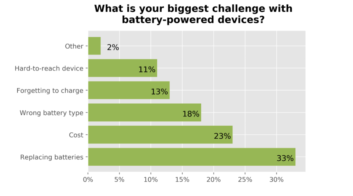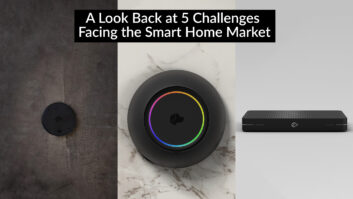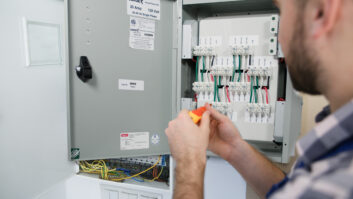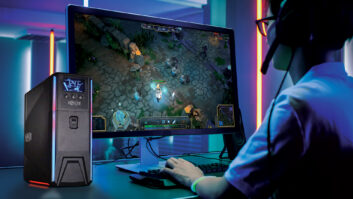WiCharge, provider of long-range wireless power, and Zogby Analytics, provider of custom research and insight to leaders of businesses and communities, have released a new report: Charging America 2019: The Current State of Power Options for Smart Home & Mobile Devices.
The report surveyed 1,000 American consumers regarding their specific challenges and current purchasing trends of battery and charging technologies for today’s smart home and mobile devices, as well as their appetite for innovative power delivery solutions.

Despite advances in battery and charging technologies – like longer-lasting lithium-ion rechargeable batteries or the attempt to move away from power cords by using contact (Qi) wireless charging pads – this new report finds that one-third of mobile devices lose their charge and die several times per week, despite fully charging the devices at night. Similarly, 40 percent have to replace smart home device batteries multiple times per month.
There is significant investment in wireless contact charging technology by device manufacturers such as Samsung, Apple, and Google. Over 600 million smartphones and other devices with contact charging shipped in 2018. However, the report finds that nearly 70 percent of consumers do not own contact charging pads, and about half of the consumers that do own charging pads have significant concerns due to the technology’s sub-par reliability, speed, and the need to leave the phone on the pad, which reduces true mobility.
“Not only does this new report highlight consumer frustration with current power delivery solutions – it also shows device manufacturers that there is a viable market willing to spend more for mobility and constant connectivity as part of their devices,” said Yuval Boger, chief marketing officer, Wi-Charge. “The research clearly reveals that the market is ready for a new power innovation, and we firmly believe long-range wireless power is the future of power.”
One-quarter of Americans surveyed said they would pay a premium for devices that could charge themselves without user intervention through long-range wireless charging. Similarly, 25 percent that are investing in smart home technology said that they would spend an additional 10 percent or more for a smart home device with long-range wireless power if that meant making the device more mobile, easier to install, and less of a hassle to service on a reoccurring basis.
Key Report Findings:
- Mobile devices are dying—a lot. One-third of American consumers find that their mobile devices die multiple times every week, despite fully charging them at night.
- Over-reliance on batteries is adding up. The prevalence of battery-powered devices is a massive headache and cost for consumers. Fifty-seven percent of smart home device owners have more than three smart home devices requiring battery replacements. Forty percent of them are still replacing smart home batteries multiple times per month, with 20 percent changing out batteries weekly.
- Consumers are willing to pay for long-range wireless power. Consumers want smartphones (77 percent) and tablets (47 percent) to include long-range power and would pay extra for this feature. Sixty-eight percent would be willing to spend more beyond the cost of their mobile phone to have long-range wireless charging vs. a device with just contact charging or corded power options.
- Consumers want ‘mobile’ smart home devices, not devices that tether to a wall. “Mobility and being wireless” is the top driver for smart home purchases for almost half (45 percent) of consumers.
- Qi charging pads aren’t cutting it. Nearly 70 percent of consumers do not purchase contact charging pads and about half of consumers that own charging pads have significant concerns due to the technology’s sub-par reliability, speed, the need to leave the phone on the pad and the limited availability outside of the home.
To download the full report: http://wi-charge.com/Zogby2019






